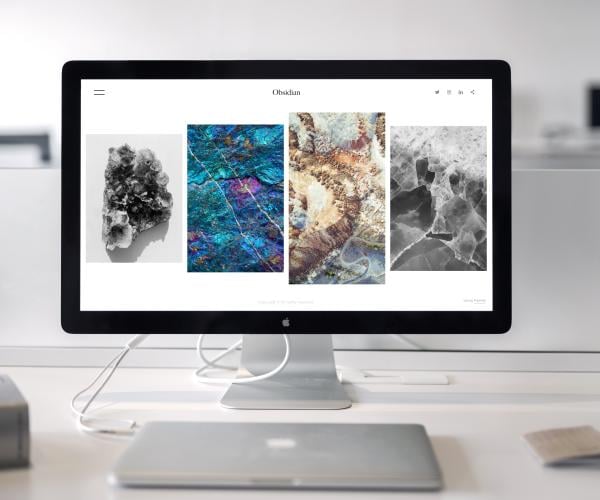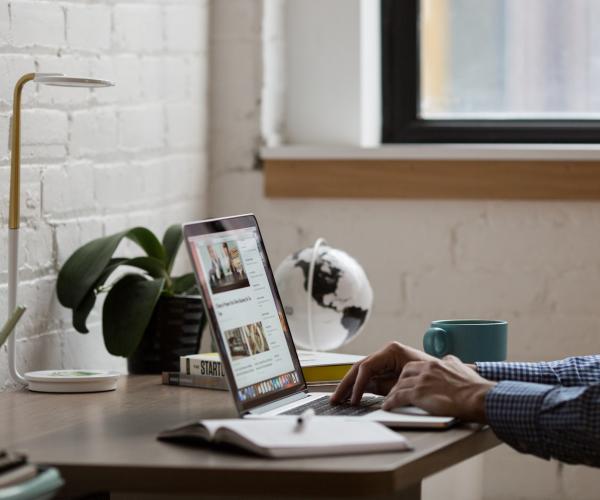Crucial Homepage Elements Your Website Should Have


The homepage of a website is the reflection of the entire website as a whole. It’s the first impression that your ideal customer gets of your business. Many businesses have trouble with high bounce rates after launching a website. A high bounce rate means that people are coming to your website but aren’t staying for very long. Now you’re probably wondering: what exactly should be on the homepage to get your ideal customer hooked? We’ve got a few answers to that question but first you need to know a thing or two about SEO, or search engine optimization.
SEO helps get your website in front of people who are searching the web for relevant information. It does this through keywords, which search engines find in your content and then store away for the next time someone is searching for those keywords. To improve your ranking you go through an optimization process so the search engines have better reason to rank you higher up in the search results. Optimizing your website for search engines is as easy as having a good amount of the right content throughout your website. The best way to optimize SEO is just to have content on your site. What content you may ask? Content that is catered to exactly what your ideal customer is looking for. This is where your homepage elements come in. Not all homepages have to look the same or include the same elements, but we’ve compiled a list that works for us and our clients.
Introduction. Give your ideal customer a brief overview of who you are and what you do. When writing an intro for your business, consider these questions:
- What is your mission statement?
- What do you hope to achieve by having your ideal customer on your website?
- Who is your ideal customer?
- What is your main offering (product or service)?
- How does your main offering help your ideal customer?
This shouldn’t be too wordy given that you want to keep your ideal customer’s attention and get them to continue browsing the rest of the website. Something short and brief, addressing a few of those questions, would be enough to suffice.
Easy-to-read navigation bar. Your navigation bar should highlight most, if not all, of the inner pages of your website. Depending on the size of your website, all of the inner pages could be listed in the main navigation bar. This should be easy to read, in a font color that doesn’t clash with the background, and not spaced out enough so it doesn’t look too cluttered. A lot of websites will make the mistake of putting the navigation bar in front of a rotating image slider. This may look aesthetically pleasing and it can work, but ultimately sliders make it hard to read content and deter a customer from exploring the site further. For a navigation bar that’s easy to read, we recommend using a solid color for the background and thoughtful font choices.
Brief overview of products or services. If you sell physical products this is where you could showcase your featured products, sales, or new releases. If you don’t sell physical products, this is where you’d showcase your main services, giving a brief description of each.
Testimonials. If you have ‘em, show ‘em. People trust other people. Honest reviews about a service can go a long way to establish trust with someone that hasn’t even purchased from you yet. Testimonials also serve as their own form of marketing. Getting people to talk about your business in any possible way will not only get customers rolling in, but they will already be familiar with your business when they do make a purchase or engage with you in person.
Blog/Newsletter. Having a blog and/or newsletter on your site opens up an avenue for plenty of content to sit on your website. With a newsletter or blog you can show potential customers your area of expertise by creating content that’s curated to your area of expertise. It shows you’re knowledgeable in your field and that you know what you’re talking about. It can also be a great way to educate your customers about what you do or certain aspects of your business that they wouldn’t have otherwise known about. Not to mention, having specific content on your site boosts your Google ranking on search engines. Promoting this on your homepage is a great way of further enticing your customers to view other areas of your website.
Social Media. Highlighting social media links on your homepage gives customers an opportunity to engage with your business. Since social media is more personalized, it can make or break a customer’s decision to buy your product or service. If you’re going to include social media on the homepage, it’s important to keep profiles updated. Keeping social media updated looks like uploading content consistently and replying to comments or engaging with followers.
Links to inner pages. Much like the blog/newsletter, linking inner pages throughout the homepage leads a potential customer further into your website. If you make it easy for them to get more information you are making it easier for them to make a purchase. People come to a website for information before making a purchase decision. They will appreciate getting that information straightaway.
Call To Action (CTA). Of course at the end of the day you want to make a sale, so putting a call to action at the beginning or end (or both) of your homepage will entice a customer to make a purchase or contact you. This can be a ‘reservations’ button for a hotel, a ‘buy now’ action for a physical product, or a coupon code for a featured product. The possibilities are endless.
Your website’s homepage is the first thing a potential customer sees. It’s your online storefront. These elements that we have listed will surely help make a good impression. They’ll also help in a few other areas, like increasing online ranking and getting your website in front of potential customers.
